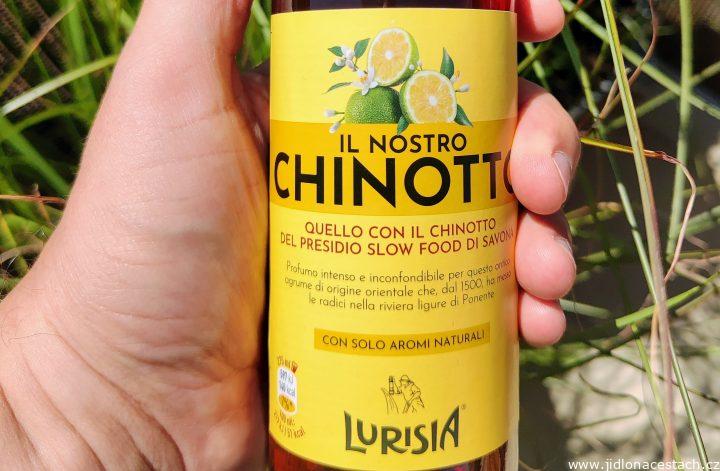What to Eat in Italy: Typical Italian Food and Specialties
Italy is a true paradise for food lovers. Italian cuisine is renowned worldwide for its diversity, unique flavors, and high-quality ingredients. It is one of the most popular cuisines in the world, winning the hearts of millions of people.
Food in Italy
Italian cuisine is characterized primarily by its simplicity and emphasis on quality ingredients. Italians value freshness, seasonality, and locality of food. Popular ingredients include tomatoes, olive oil, garlic, basil, mozzarella, and parmesan. Italian dishes are often light, healthy, and full of flavor.

🇮🇹 Are you a fan of pizza, pasta, or gelato? Want to discover more Italian foods? Subscribe to my newsletter and I will send you for free everything you need to know about Italian food and drinks.
Typical Italian Food
Among typical Italian dishes are pasta. There are countless types of Italian pasta and even more ways to prepare them. Popular ones include spaghetti carbonara, lasagna, ravioli, or fettuccine alfredo. Another world-famous Italian dish is pizza. Whether you like it with tomato sauce, mozzarella, ham, mushrooms, or other ingredients, you’ll find the best in Italy. For lovers of rice dishes, I recommend trying traditional Italian risotto. Among meat dishes, osso buco (a slice of veal shank) is worth mentioning.
The typical Italian minestrone soup (vegetable soup) is also popular. Seafood is also popular in Italy, whether it’s fish, shrimp, octopus, or mussels.

Italy is famous for its ice cream (gelato), tiramisu, panna cotta, or Sicilian cannoli tubes. Italian pastries are excellent, whether it’s cornetto (Italian croissant) or ciabatta. My favorite Italian pastry is focaccia barese.

Italian National Dish
Italy has many specialties, and it can’t be said that it has one official national dish. However, there are some dishes that are typical for Italians and known worldwide. Pizza, especially pizza Margherita, could be considered an Italian national dish. Then pasta, which includes various types of shapes and sizes, creamy risotto, and the Italian version of ice cream called gelato.

What to Eat in Italy
- Pizza. Traditional Italian dish made of dough, tomato sauce, cheese, and various toppings.
- Pasta. Various shapes and sizes, often served with sauces and cheese.
- Gelato. Italian ice cream with a creamy texture and incredible taste.
- Risotto. Creamy rice dish traditionally cooked with broth and ingredients like mushrooms, seafood, or saffron.
- Tiramisu. Dessert made of ladyfingers soaked in coffee and mascarpone cream.
- Espresso. Strong Italian coffee served in small cups.
- Cappuccino. Espresso with foamed milk, often served for breakfast.
- Parmigiano-Reggiano. Traditional Italian hard cheese with a strong flavor, often grated over pasta and risottos.
- Prosciutto di Parma. Dry-cured ham from the Parma region, similar to Spanish dry-cured ham jamón.
- Lasagne. Baked pasta with meat sauce, béchamel, and cheese.
- Prosecco. Sparkling white wine from the Veneto region, often used in cocktails like Bellini or Spritz.
- Primitivo. Full-bodied red wine from southern Italy, with notes of ripe fruit and spices.
- Mozzarella di Bufala. Fresh cheese made from buffalo milk, traditionally served with tomatoes and basil. A dish in the colors of Italy!
- Vitello tonnato. Thin slices of veal served with a cold tuna sauce.
- Bruschetta. Toasted bread with garlic, olive oil, and chopped tomatoes.
- Panna cotta. Cream dessert flavored with vanilla.
- Chianti. Dry red wine from Tuscany, often served with pasta and meats.
- Aperol Spritz. Refreshing cocktail made with Aperol, prosecco, and soda water.
- Gnocchi. Small dumplings made from potato dough, traditionally served with cream or tomato sauces.
- Cannoli. Sicilian dessert made of crispy pastry filled with sweet ricotta cream.
- Minestrone. Italian vegetable soup with pasta.
- Saltimbocca. Veal cutlets with prosciutto and sage.
- Arancini. Fried rice balls filled with meat, cheese, or peas, a traditional Sicilian dish.
- Affogato. Dessert made of a scoop of ice cream topped with espresso.
- Limoncello. Lemon liqueur, often served as a digestif after meals.
Typical Italian Drinks
Great drinks are an integral part of Italian cuisine. Italy is famous for its coffee, especially espresso. Italians usually enjoy cappuccino or caffè latte only in the morning for breakfast.

The Aperol Spritz cocktail is also very popular, which is prepared from Aperol, prosecco, and soda water. In summer, you’ll appreciate ice-cold limoncello, a liqueur made from lemon peel.

Of course, it’s impossible to forget about Italian wines. Italy is among the largest wine producers in the world, with countless excellent wines to be found here. Among the most famous Italian wines are Primitivo, Chianti, Montepulciano d’Abruzzo, Barolo, Barbaresco, or Brunello di Montalcino. If you prefer sparkling wines, you’ll fall in love with prosecco. I also enjoy sweet dessert wines, and I always try to taste some local variety.

How to Fully Enjoy Italian Food
If you want to truly appreciate Italian food and enjoy it to the fullest, here are a few tips:
- Italy has a rich and diverse cuisine that varies from region to region. Try regional specialties such as Neapolitan pizza, Sicilian arancini, or Venetian cicchetti. Each region has something to offer.
- Treat yourself to excellent Italian wine. Local wines perfectly complement local dishes. Don’t be afraid to experiment; with pasta, feel free to have a glass of red Chianti or Montepulciano d’Abruzzo, and with fish, a light white wine.
- Enjoy your meal with friends. For Italians, eating is a social event where family and friends gather. Indulge in long, relaxed dinners full of great food, drinks, and conversation. Don’t rush.
- If you have the opportunity, go straight to the source for Italian flavors. Visit wineries, cheese factories, farms, and soak up the atmosphere. You can then use these experiences and knowledge at home.
- Buy quality ingredients for cooking Italian dishes at home. Italian cuisine is based on fresh, seasonal, and local ingredients. Invest in quality pasta, olive oil, cheeses (such as Parmesan or Pecorino), tomatoes, and herbs. You’ll notice the difference in taste.
Before your trip, you can also read books about Italian cuisine and gastronomy or watch Italian films and series about cooking and food. My favorite Netflix series “Chef’s Table” dedicates several episodes to Italian chefs, such as Massimo Bottura (Season 1, Episode 1) or Dario Cecchini (Season 6, Episode 2). Sweet lovers shouldn’t miss the episode featuring Sicilian pastry chef Corrado Assenza (Season 4, Episode 2), who demonstrates his artistry in traditional Italian desserts.
Regional Italian Cuisine and Specialties
Northern Italy
Northern Italy is a true paradise for risotto and truffle lovers. In Lombardy (Milan), the famous risotto alla milanese with saffron is prepared, while Piedmont (Turin) is renowned for truffles (tartufi). Liguria (Genoa) is the home of pesto – a sauce made from basil, Parmesan, pine nuts, and olive oil. Veneto attracts with seafood, especially seafood risottos or those with black cuttlefish ink.

Central Italy
In central Italy, Tuscan and Umbrian cuisines come to the forefront. Tuscany (Florence) is famous for using legumes like beans and chickpeas and for its simple rural cuisine. A specialty is ribollita – a thick vegetable soup with bread and beans. Umbria (Perugia), like Piedmont, is renowned for truffles and mushrooms, especially black truffles from the Norcia area. Lazio (Rome) is known for pasta such as bucatini and rigatoni. Local specialties include cacio e pepe (pasta with pecorino cheese and pepper) or carbonara.
Southern Italy and Italian Islands
Campania (Naples) is the home of the legendary margherita pizza. Calabria (Catanzaro) is known for its spicy peperoncino pepper and nduja sausage. Sicily (Palermo) entices with specialties such as pasta alla Norma with eggplant and ricotta or cannoli – tubes filled with sweet cheese. Fish and seafood are also famous here.

Famous Italian Chefs
Italy is renowned for a number of famous chefs who have contributed to its excellent reputation worldwide. Among the most famous are:
- Gualtiero Marchesi (1930-2017). Considered the father of modern Italian cuisine. He was the first Italian chef to earn three Michelin stars. He was famous for his innovative approaches and techniques, but always with an emphasis on quality Italian ingredients. His famous specialty was saffron and gold risotto.
- Massimo Bottura (1962). Owner and chef of Osteria Francescana, which has been named the world’s best restaurant three times. Bottura is known for his creative and unconventional approach to traditional Italian dishes. His signature dishes include “Five Ages of Parmigiano Reggiano” and “Caesar Salad in Bloom.”
- Carlo Cracco (1965). A media-known face and judge on the Italian version of MasterChef. He owns several renowned restaurants, with his flagship being the two-Michelin-starred Cracco restaurant in Milan.
- Nadia Santini (1953). The first Italian female chef awarded three Michelin stars. She cooks at the family restaurant Dal Pescatore in Mantua. Her cuisine is based on the traditions of the Lombardy region and emphasizes premium seasonal ingredients.
- Gennaro Esposito (1970). Chef and owner of the two-Michelin-starred restaurant La Torre del Saracino on the Amalfi Coast. Esposito is known for his sensitive work with fresh seafood and ability to elevate local ingredients to a gourmet experience.
Besides these famous chefs, there are of course many other excellent Italian cooks, with or without Michelin stars, who significantly contribute to the reputation of Italian gastronomy.

Italian Michelin Restaurants
In Italy, there are 1,996 restaurants included in the Michelin guide, of which 13 restaurants have 3 stars, 40 restaurants have 2 stars, 332 restaurants have 1 star, and 254 restaurants are in my favorite category, Bib Gourmand – exceptional value for money (June 2024).
One of the most famous Italian Michelin restaurants is Osteria Francescana in the historic city of Modena. This restaurant, led by famous chef Massimo Bottura, has already earned three Michelin stars and has been named the best restaurant in the world several times. Bottura is known for his creative approach to Italian cuisine and use of high-quality local ingredients. Visiting Osteria Francescana is one of my great wishes.
Another renowned Michelin restaurant is La Pergola in Rome, located in the luxurious Rome Cavalieri hotel. The cuisine here is led by chef Heinz Beck and boasts three Michelin stars. Guests can look forward to first-class Mediterranean cuisine with an emphasis on fresh fish and seafood.
Enoteca Pinchiorri, located in the heart of Florence, is another gem of Italian gastronomy with three Michelin stars. In this restaurant, led by French chef Annie Féolde, Italian cuisine is combined with French influences. The restaurant is also known for its extensive wine cellar, offering some of the best Italian and world wines.

Interesting Facts about Italian Food
- Italian cuisine has been inscribed on the UNESCO Intangible Cultural Heritage list.
- Italy is the largest producer and consumer of pasta in the world.
- Italians consume an average of 25 kg of pasta per person per year.
- The first pizzeria was established in Naples in 1830.
- Tiramisu means “cheer me up” or “pick me up” in translation.
- Espresso coffee was invented in Italy at the end of the 19th century.
- The oldest European café, Caffè Florian, was opened in Venice in 1720.
- Italian ice cream (gelato) contains less fat and sugar than regular ice cream.
- According to legend, risotto alla milanese was invented by accident in the 16th century during the production of stained glass.
Enjoy Italy and best Italian food!









